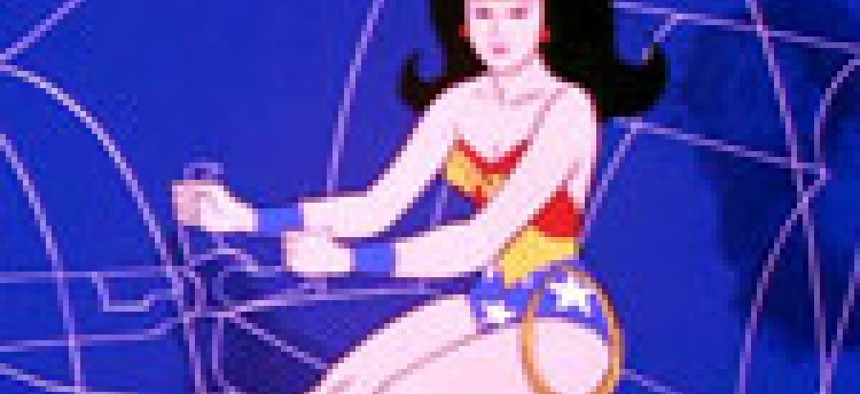Nanotube paint could make invisible aircraft a reality


Connecting state and local government leaders
Nanotubes can be configured to create the blackest black, rendering an object invisible to radar or vision at night, researchers say. You wouldn't even be able to see Wonder Woman sitting inside.
In one of the many memorable scenes from the movie “The Graduate,” the main character is told one word that is the secret to success: plastics. In a remake of that movie, the word would probably be: nanotubes.
It’s almost as if scientists have just discovered nanotubes — or more accurately, how to manufacture them. When you can create very tiny things, you can do a lot with them. It’s not quite like changing something on a molecular level, but the closer we get to that, the more interesting properties we can find to work with.
Now these nano-based technologies seem to be appearing in some form in all sorts of experimental technology, from computer memory to batteries, with each claim seemingly more impressive than the last.
But the latest one, being developed by researchers at the University of Michigan, could have a real impact on warfare and surveillance: invisibility cloaks provided by nanotube paint that could be used on aircraft and other vehicles, Technology Review reports.
The secret to the latest discovery is a better black. Way back in my college days, I had this cool physics professor who was into a lot of things, including drag racing. He noticed that the other drag racers were always on a quest to find the blackest black paint for their cars.
To demonstrate how hard this was, he showed us a sealed box with three black squares of paint on the side and asked us to pick which one was the darkest, the truest black.
The consensus was that the middle square looked the darkest. The others really didn’t come close. So then he opened up the box and when light shined in, it was revealed that the middle square was actually a hole cut into the side, a window to the dark interior of the container. The darkest black was actually the dark itself. Every type of paint either scattered or reflected light to some degree.
But these new carbon nanotubes don’t do that. It seems that nanotubes can be configured in such a way that they can absorb all electronic signals, and even light. The tubes have to be spaced properly so that their index of refraction matches the surrounding air.
When that happens, the object they are hiding basically becomes just like the air around it as far as most forms of energy, such as radar or infrared light, are concerned. During the day, you would still be able to see an aircraft coated with nanotubes, because it would be a dark spot in the sky, like a flying black hole. But at night, that darkness would render it almost invisible to both sight and radar.
The big problem, according to L. Jay Guo, professor of electrical engineering and computer science at Michigan who is leading the project, is that the nanotubes are created using high pressure and temperature, in tiny chambers that are much smaller than any airplane. However, Guo theorized that the nanotubes could be attached to tiny particles which could then be suspended in paint. When the paint is applied to an aircraft, it would then take on the invisible-like properties.
Guo’s solution may not be true invisibility, but it does fix a problem that Wonder Woman and her invisible jet faced: having to remember to dress properly before she went out flying because people could see her sitting there though her jet’s walls. That kind of defeated the purpose of an invisible jet but, after all, it was a comic book. In this case, reality could surpass a superhero’s gadgets.
NEXT STORY: SETI's search for alien life is back in business




